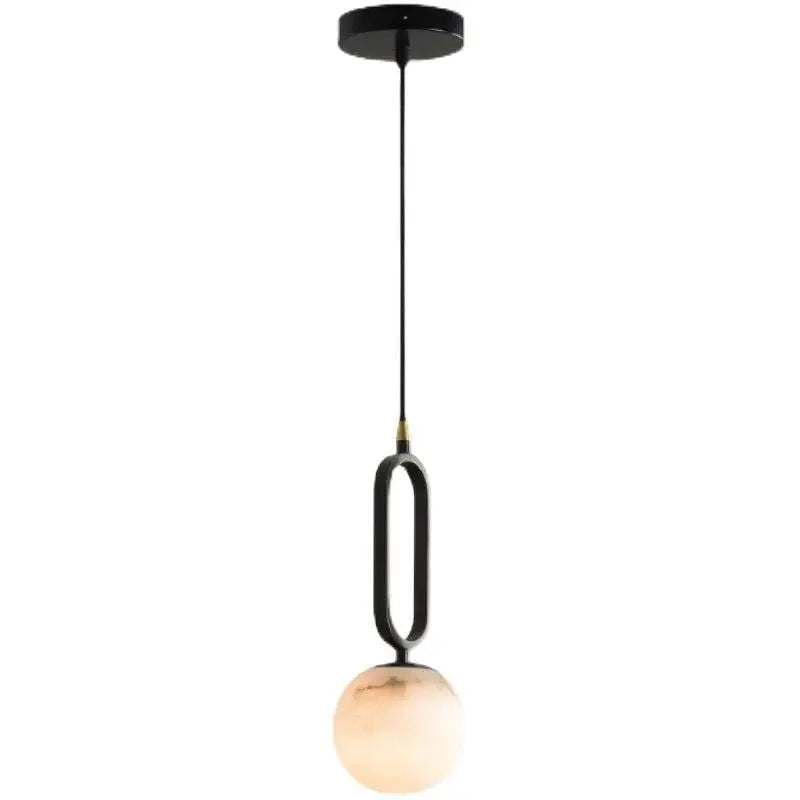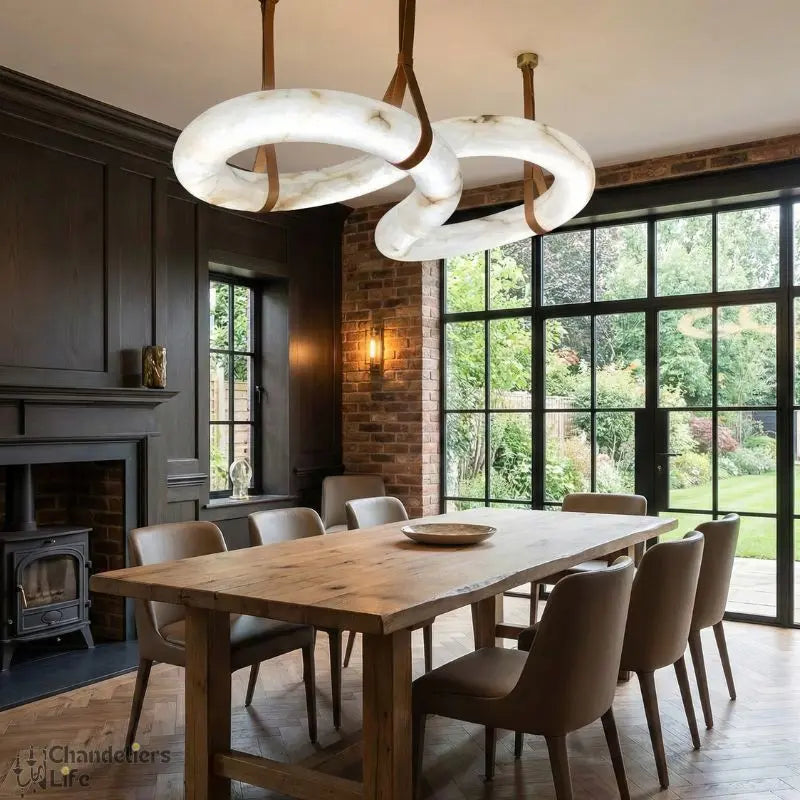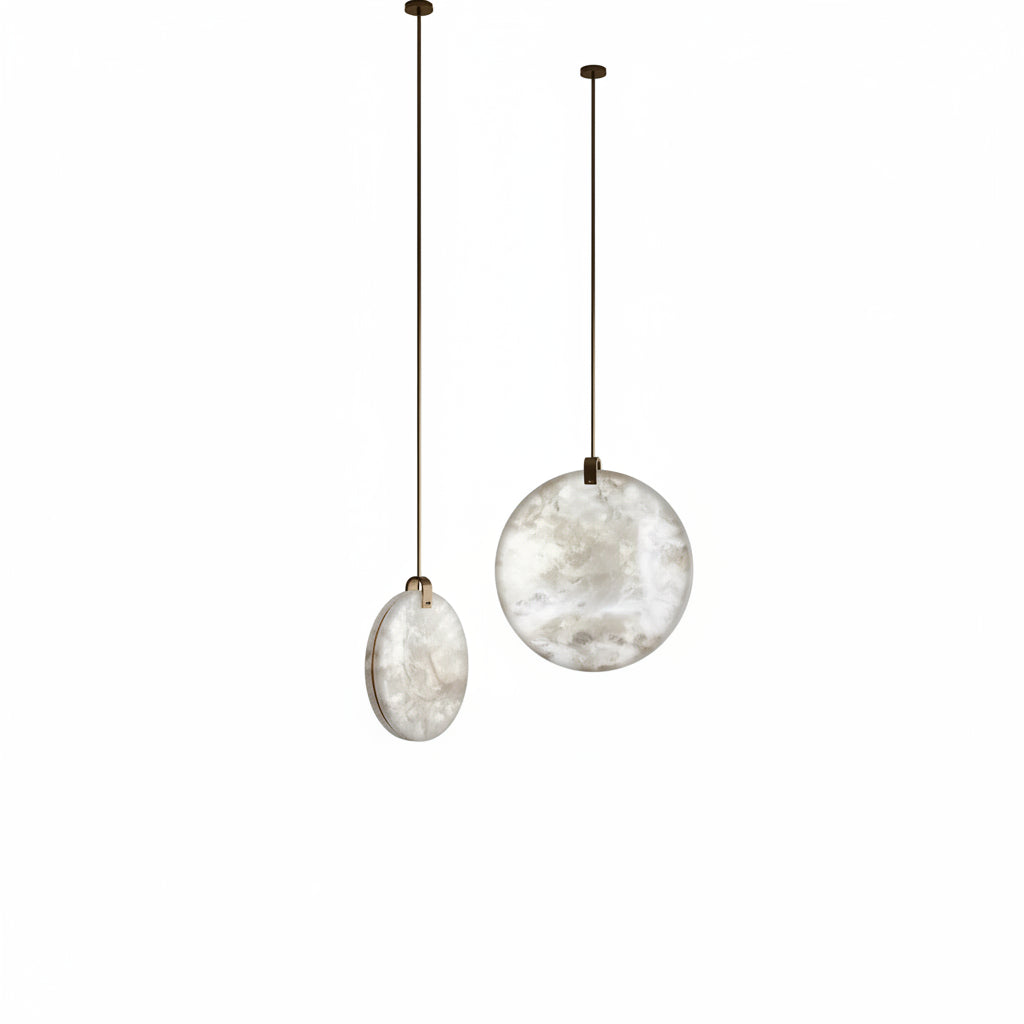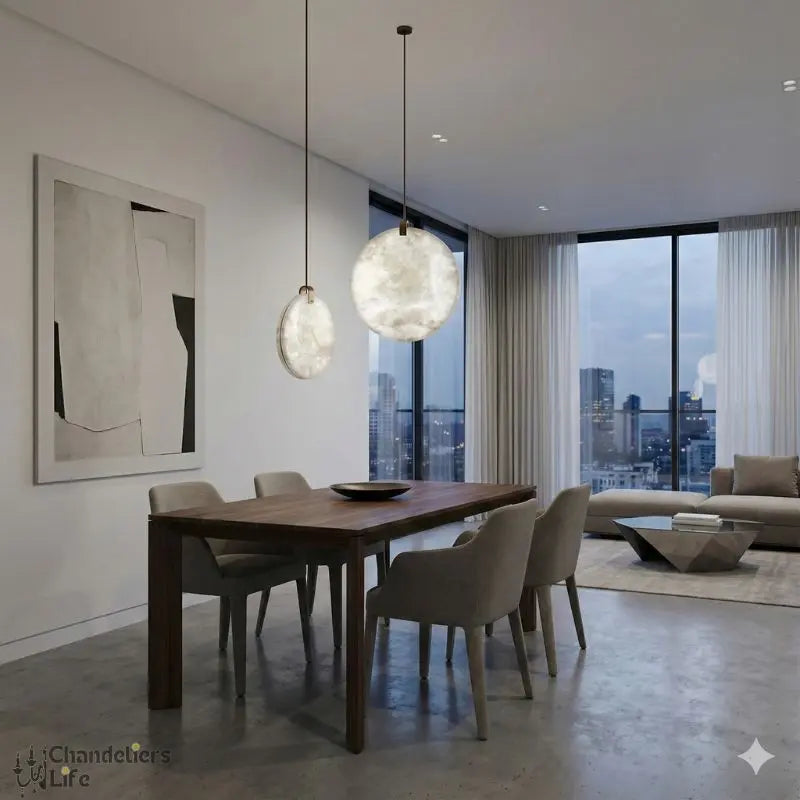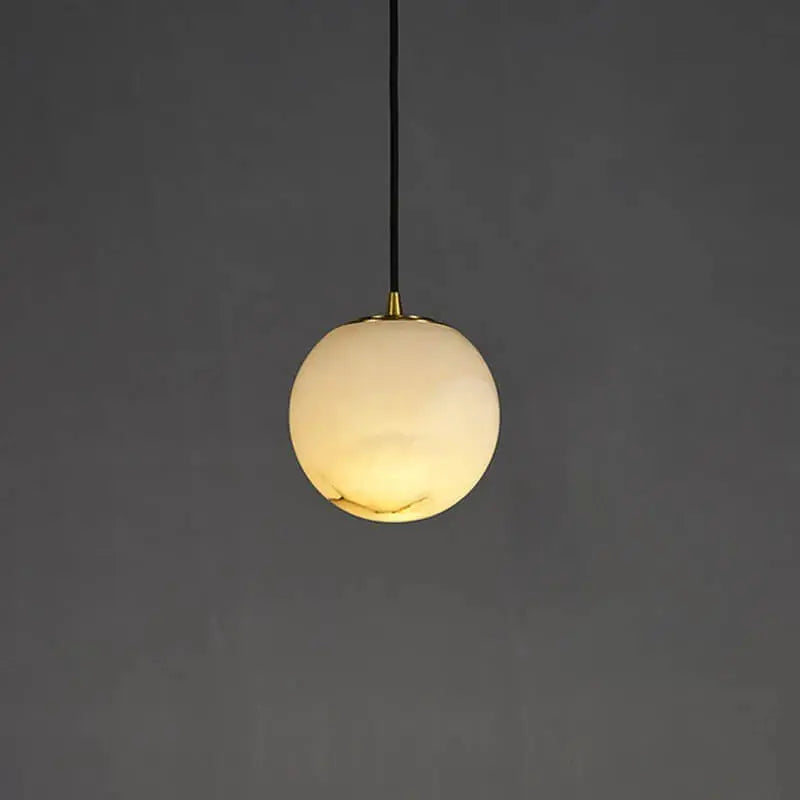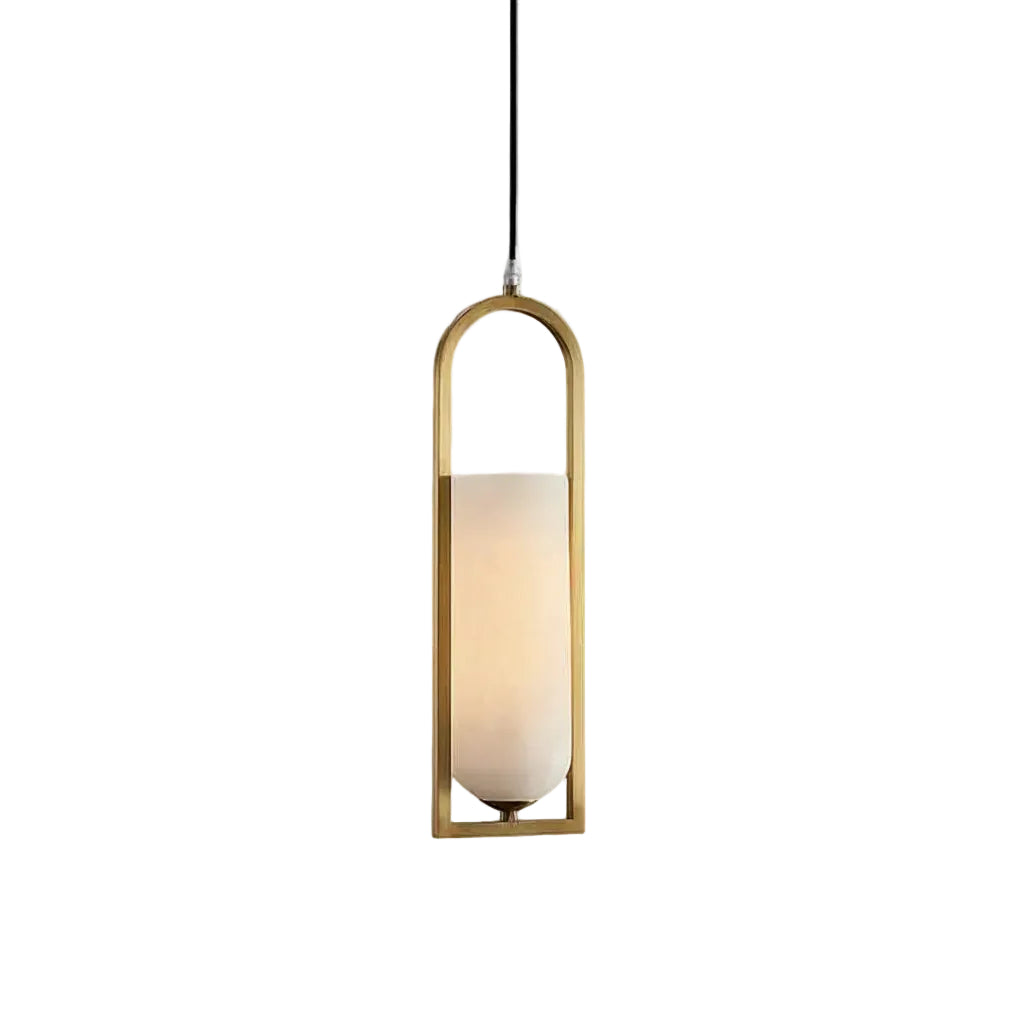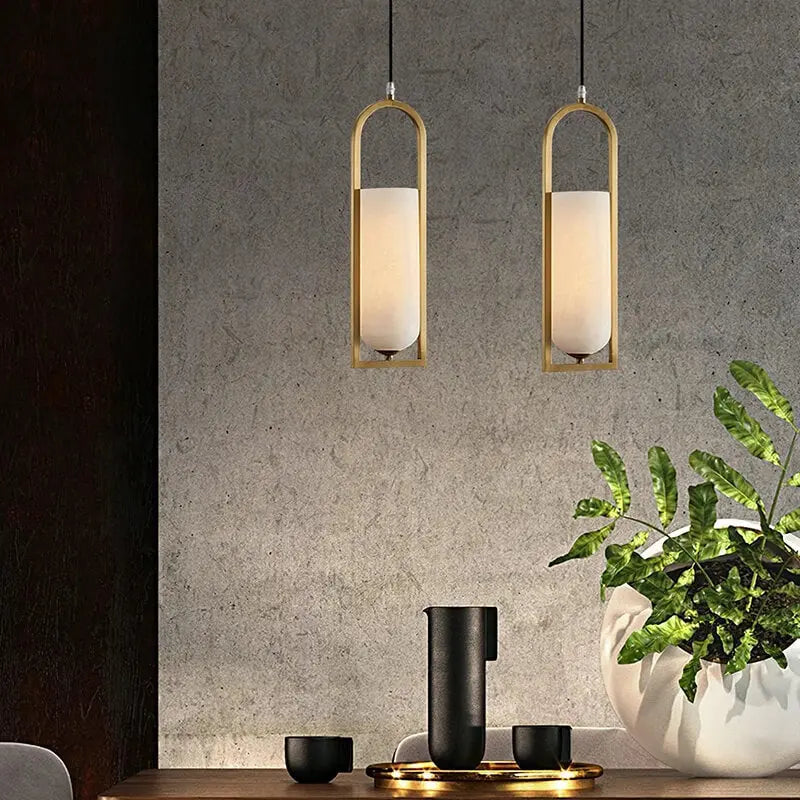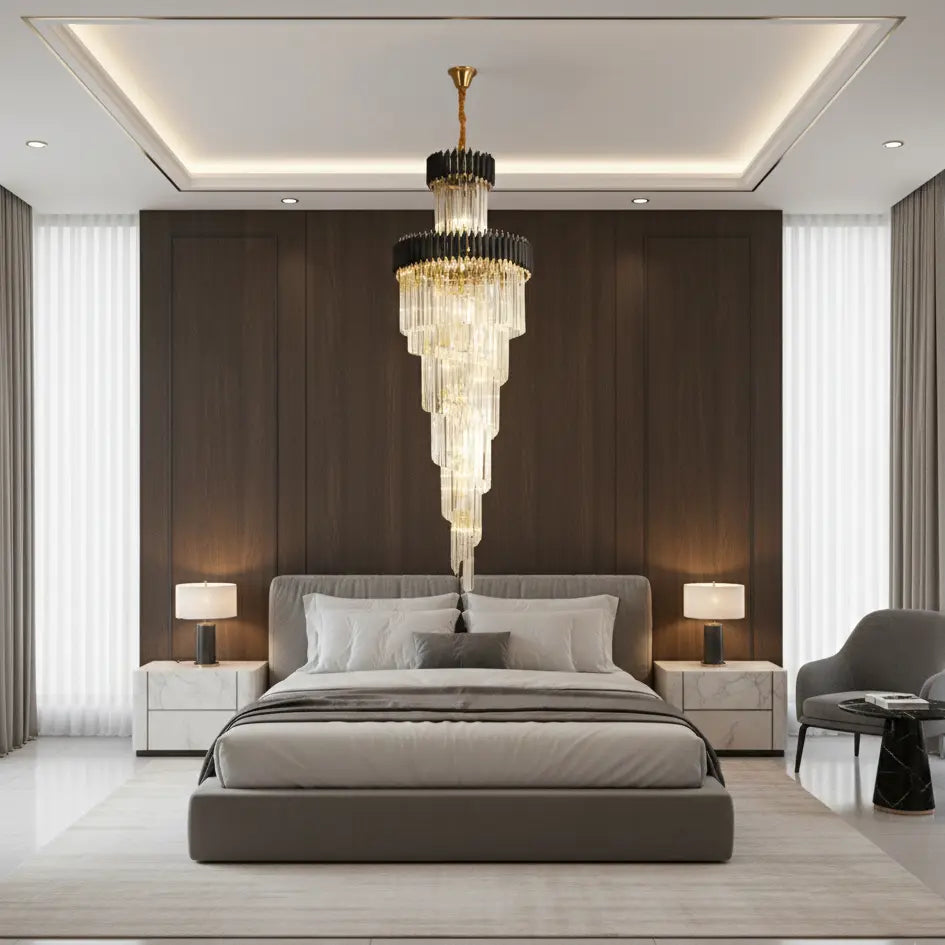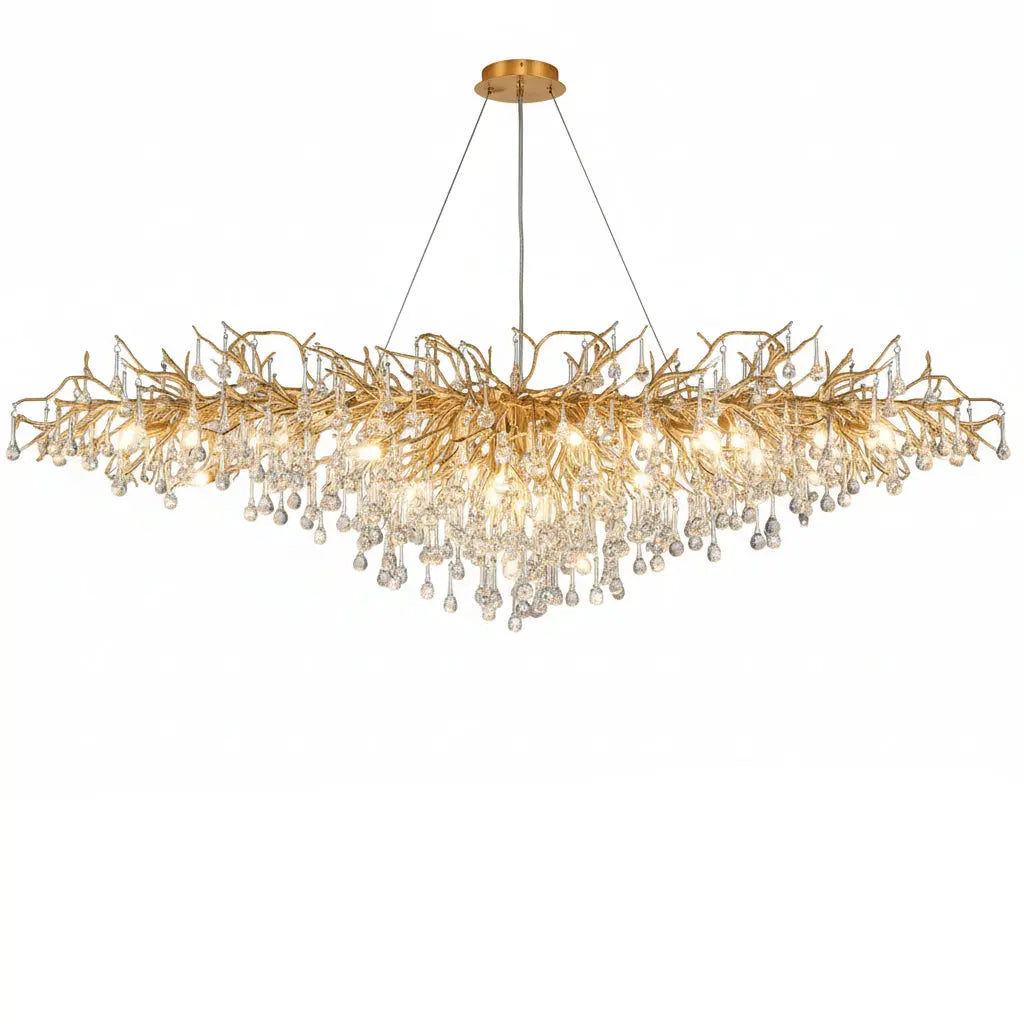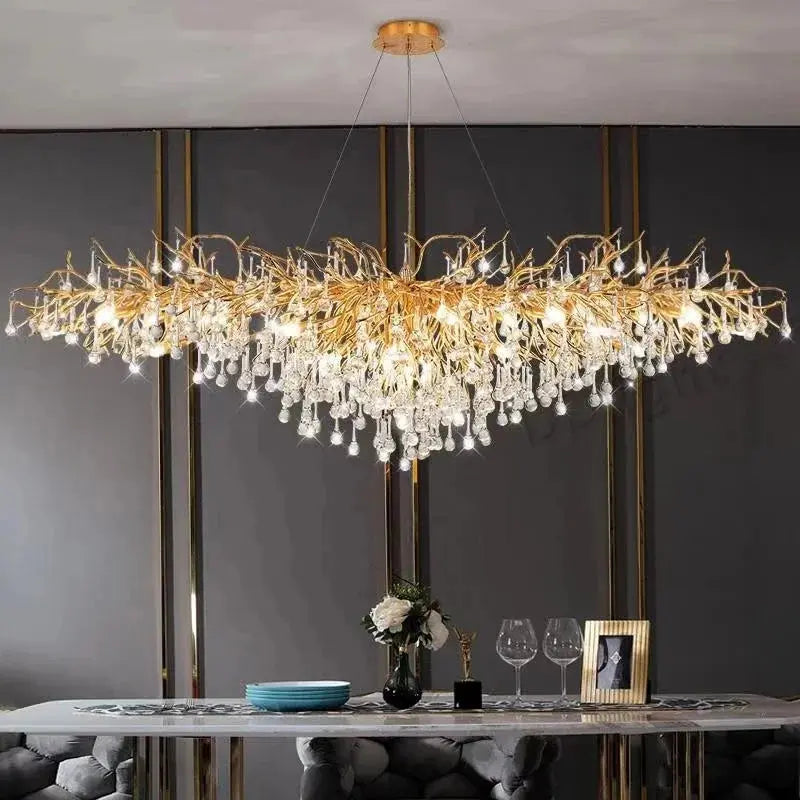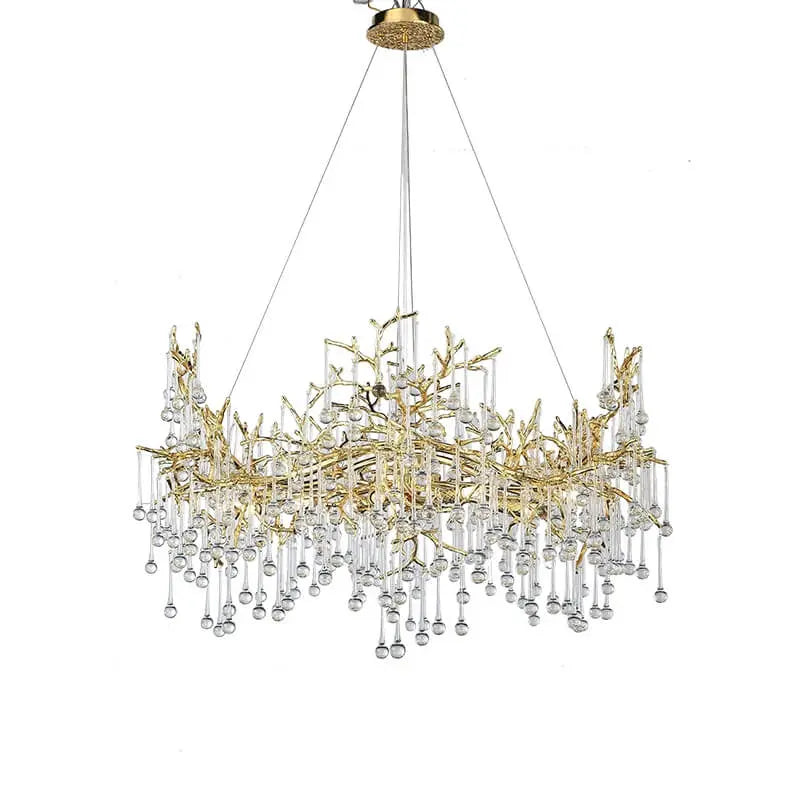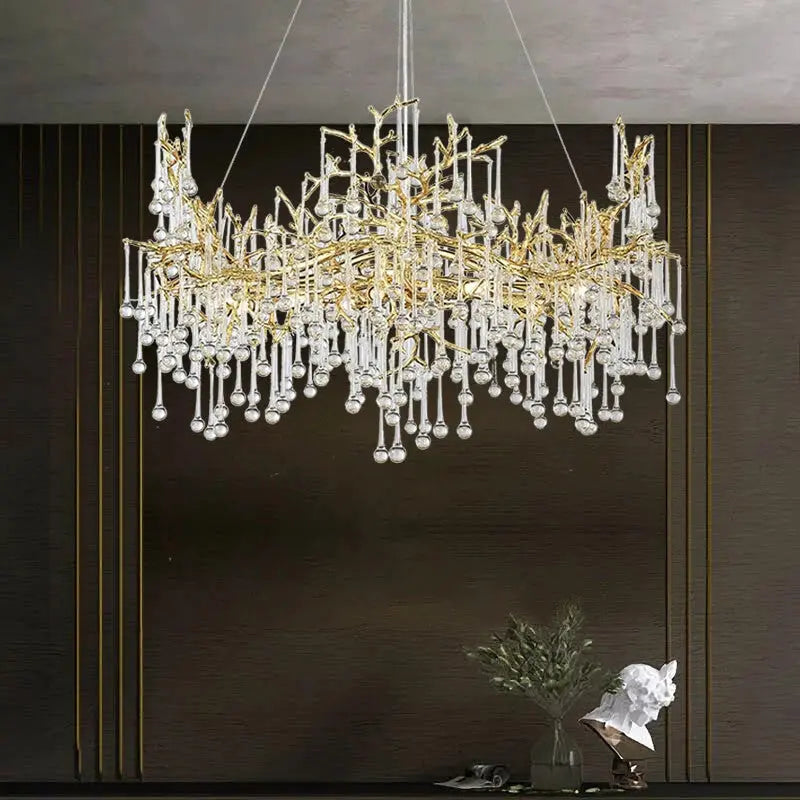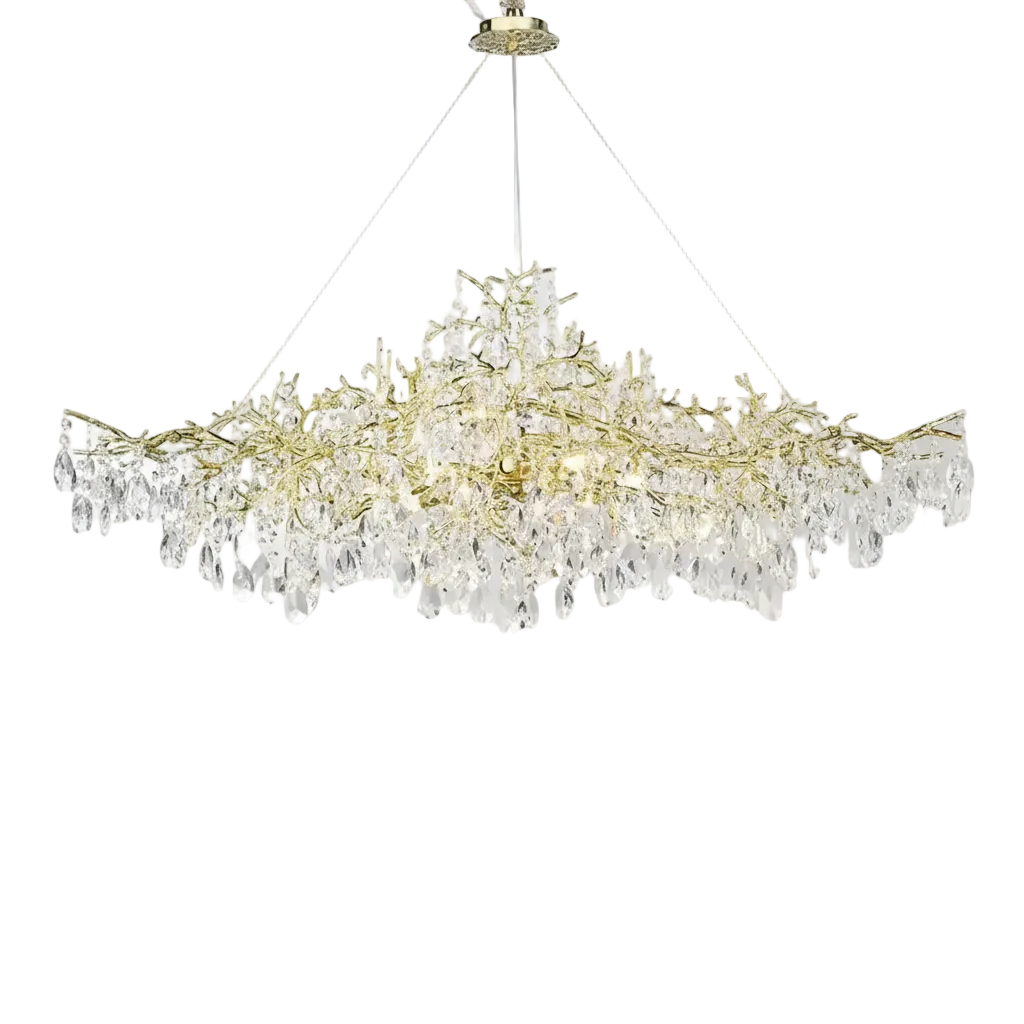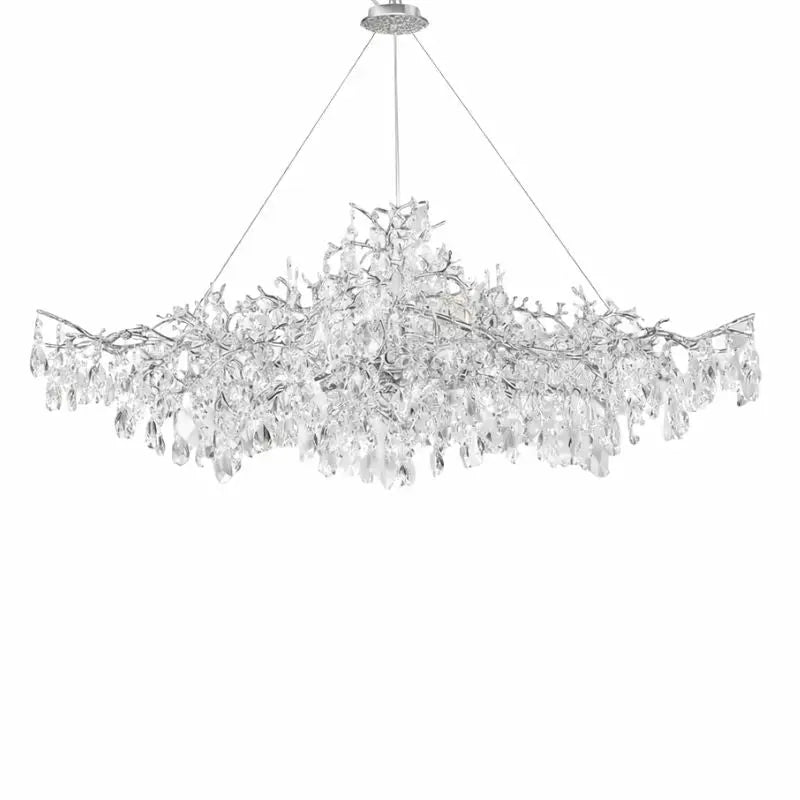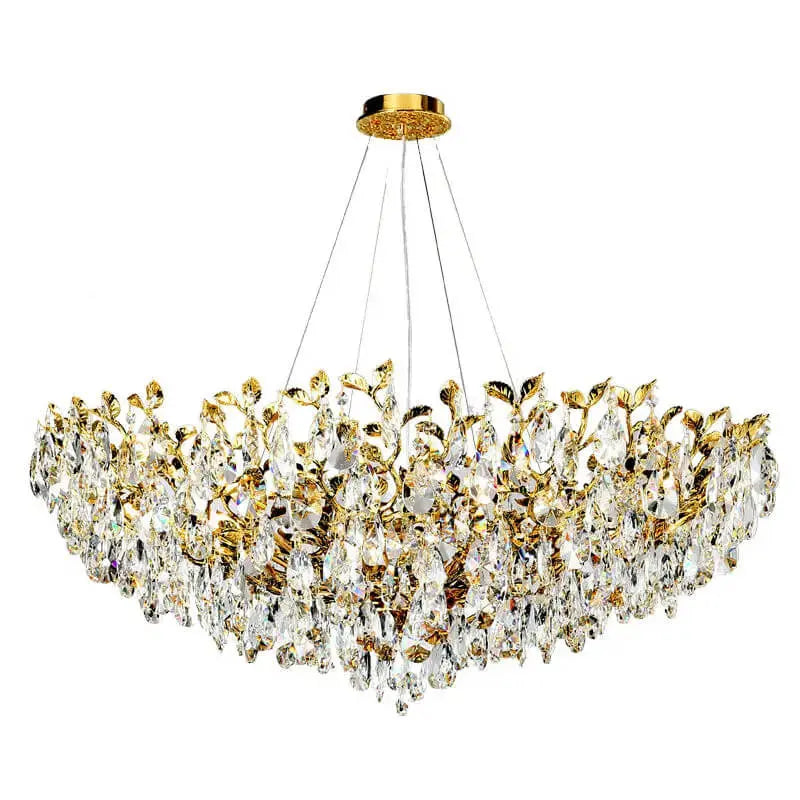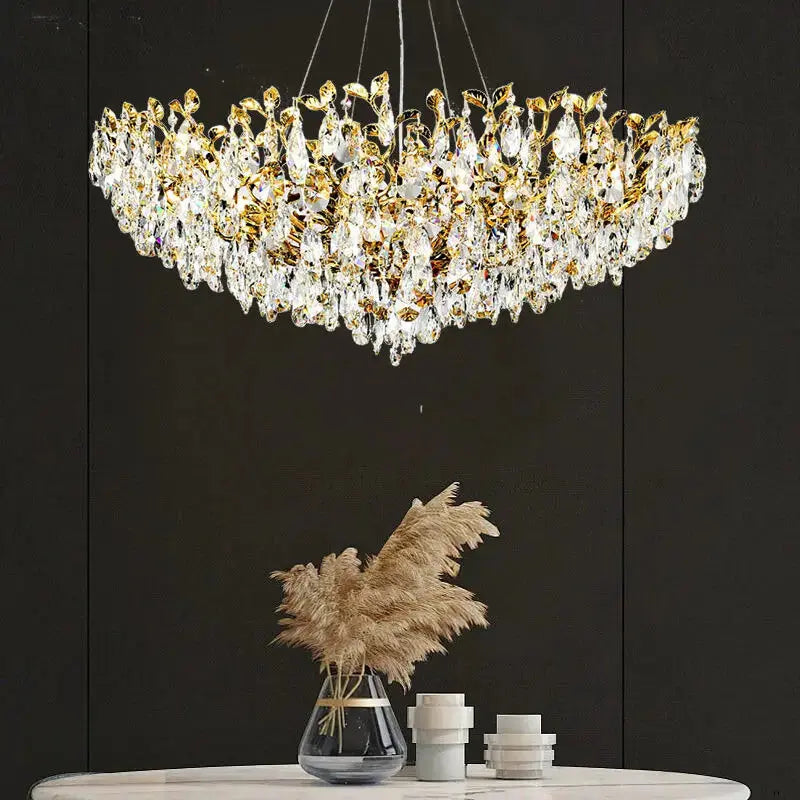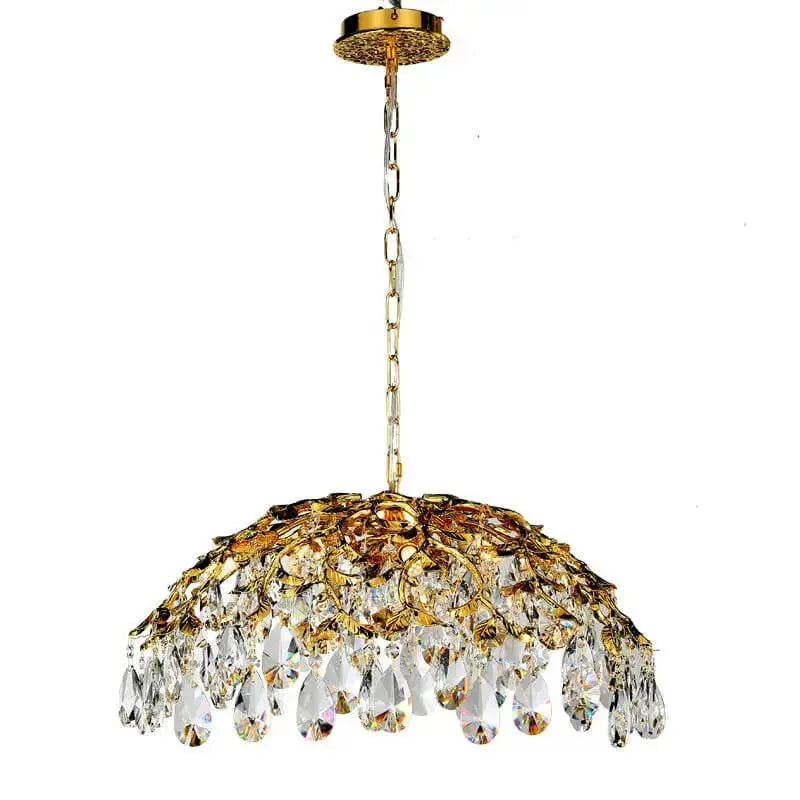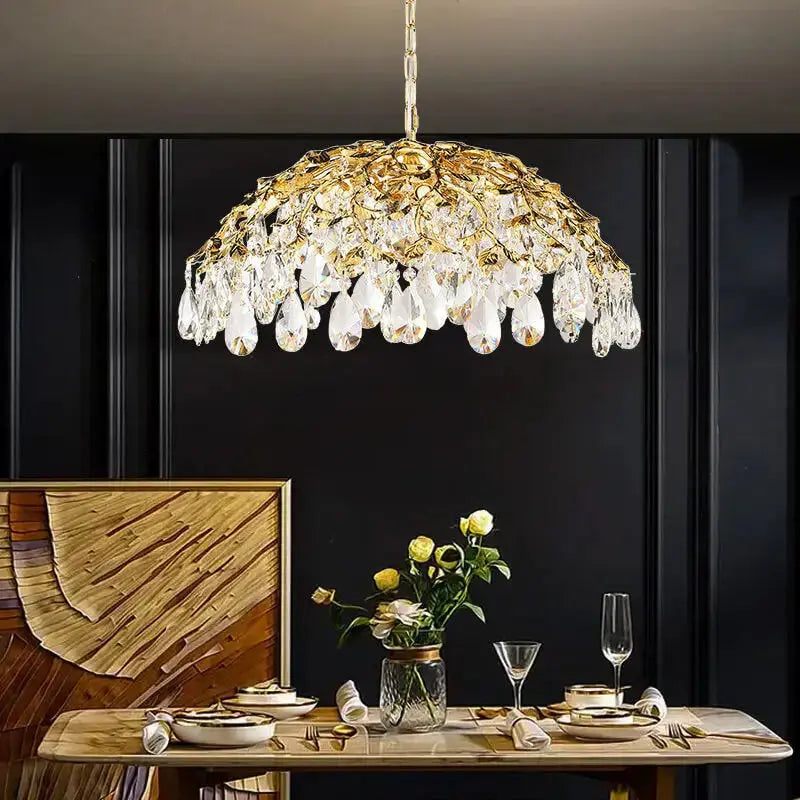Chandeliers, those dazzling light fixtures, have graced our homes and grand halls for centuries. But have you ever wondered what makes one chandelier heavier than another? This article dives deep into understanding how the material of a chandelier affects its weight. We'll explore various factors, compare common materials, and even look at real-world examples to help you grasp this intricate subject.
Key Takeaways
- Material density plays a significant role in determining the weight of a chandelier.
- The design and complexity of a chandelier can add to its overall weight.
- Size and scale are crucial factors; larger chandeliers are naturally heavier.
- Different materials like crystal, metal, and wood have unique weight characteristics.
- Understanding weight distribution and structural support is essential for safe installation.
Factors Affecting Chandelier Weight by Material
Material Density
The weight of a chandelier is greatly influenced by the density of the material used. Denser materials like crystal and metal will naturally weigh more than lighter materials such as wood or acrylic. This is a crucial factor when considering the overall weight and the type of support structure needed.
Design Complexity
The complexity of the chandelier's design also plays a significant role in its weight. Intricate designs with numerous components and detailed craftsmanship will add to the overall weight. Simple designs, on the other hand, tend to be lighter and easier to manage.
Size and Scale
The size and scale of the chandelier are directly proportional to its weight. Larger chandeliers will weigh more and require stronger support structures. It's important to consider the room's dimensions and ceiling height when selecting a chandelier to ensure it fits well and is safely supported.
Comparative Analysis of Common Chandelier Materials
Crystal Chandeliers
Crystal chandeliers are often seen as the epitome of elegance and luxury. They are made from various types of crystal, including lead crystal, which is known for its high refractive index and ability to create stunning light effects. Crystal chandeliers are typically heavier than other types due to the density of the material. They require sturdy ceiling structures for safe installation.
Metal Chandeliers
Metal chandeliers can be crafted from a variety of metals such as iron, pewter, bronze, silver, and even gold. However, brass is a popular choice because it has the warm appearance of gold but is much cheaper and easier to work with. Metal chandeliers are known for their durability and can be designed in a wide range of styles, from simple to highly intricate.
Wooden Chandeliers
Wooden chandeliers offer a rustic and natural look, making them ideal for certain interior styles. They are generally lighter than crystal and metal chandeliers, making them easier to install. However, they may require more maintenance to keep them looking their best. Wooden chandeliers can be crafted from various types of wood, each offering a unique texture and colour.
When choosing a chandelier, it's important to consider the material not just for its aesthetic appeal but also for its weight and the structural support required for safe installation.
Calculating Chandelier Weight for Different Materials
Weight to Force Conversion
To find the force a chandelier applies, you need to convert its weight into force. Weight is mass times gravity. So, to get the force in newtons, multiply the weight (in pounds) by the gravitational constant (9.8 m/s²). For example, if a chandelier weighs 400 pounds, the force would be 400 * 4.448 = 1782N.
Stress and Safety Factors
When calculating the stress on a chandelier, you must consider safety factors. For instance, if the maximum stress of a material is 250 MPa and the safety factor is 4, the allowable stress would be 250 MPa / 4 = 62.5 MPa. This ensures the chandelier does not exceed safe stress levels.
Component Forces
The force caused by the chandelier's mass should be split into its components. If the rods holding the chandelier are at a 45-degree angle, the vertical component of the force is split evenly between the two rods. Each rod supports half of the total weight. If the force in either rod exceeds the maximum allowable force, the chandelier is too heavy.
These measurements will help you determine the appropriate diameter and height for your chandelier.
Structural Support and Safety Considerations
Ensuring the ceiling can support the chandelier's weight is crucial. Verify that the ceiling structure can handle the load, especially for large or heavy designs. This step is vital to prevent any accidents or damage.
It's essential to ensure the chandelier complies with safety standards and electrical codes. This includes checking local regulations and guidelines. If in doubt, seek professional help to avoid any risks.
Proper load distribution is key to maintaining the chandelier's stability. This involves ensuring that the weight is evenly distributed across the ceiling structure. Consistently ensuring that the normal stress doesn't exceed the material's strength is fundamental to safety in design. For example, in the exercise with the chandelier, the normal stress must stay below 150 MPa to prevent damage to the rods.
Always remember to check local regulations and guidelines and, if in doubt, seek professional help to avoid any risks.
Case Studies: Real-World Applications
Hotel ballrooms often feature grand chandeliers that are both ornate and heavy. These chandeliers not only provide lighting but also add to the luxurious ambiance of the space. The weight of these chandeliers can be substantial, requiring careful consideration of the ceiling structure and load distribution.
In homes, chandeliers are usually smaller but still need to be chosen with care. The weight of a chandelier in a residential setting can vary greatly depending on the material and design. Homeowners should explore a wide range of chandelier styles to find one that fits their space and meets safety standards.
Chandeliers in commercial spaces, such as restaurants and retail stores, serve both functional and aesthetic purposes. These chandeliers need to be sturdy and safe, especially in high-traffic areas. Financing options available for luxury chandeliers can make it easier for businesses to invest in high-quality lighting solutions.
When selecting a chandelier, always consider the weight and the structural support needed to ensure safety and longevity.
Material Selection and Aesthetic Impact
Room Style Compatibility
Choosing the right material for a chandelier is crucial for matching the room's style. Crystal chandeliers collection offers elegant and sophisticated lighting options with sparkling crystals. For a modern look, metal chandeliers with sleek finishes like matte black or brushed nickel are ideal. Wooden chandeliers, on the other hand, bring a rustic charm to any space.
Finish and Appearance
The finish of a chandelier can significantly affect its overall appearance. Polished brass, for instance, adds a touch of luxury, while a matte finish offers a more understated elegance. It's important to select a finish that complements other elements in the room, such as door handles and light fixtures.
Lighting Effects
Different materials can create various lighting effects. Crystal chandeliers, for example, refract light to create a sparkling effect, enhancing the room's ambiance. Metal chandeliers often provide a more focused light, suitable for task lighting. Wooden chandeliers tend to diffuse light softly, creating a warm and inviting atmosphere.
When selecting a chandelier, consider not only its aesthetic appeal but also how it will interact with the room's existing decor and lighting needs.
Choosing the right materials for your lighting fixtures can greatly influence the look and feel of your space. Whether you prefer the classic charm of crystal or the modern touch of metal, the materials you select will shape the overall aesthetic. Visit our website to explore a wide range of options and find the perfect fit for your home.
Conclusion
In summary, the weight of a chandelier greatly depends on the material it is made from. Different materials like crystal, glass, metal, wood, and acrylic each have unique properties that affect the overall weight. Understanding these differences is crucial for ensuring the chandelier is safely supported and fits well within the room's design. By considering factors such as the maximum allowable force and the safety standards, one can make informed decisions when choosing a chandelier. This knowledge helps in creating beautiful and safe lighting fixtures for any space.
Frequently Asked Questions
What factors affect the weight of a chandelier?
The weight of a chandelier is influenced by the material it's made from, the complexity of its design, and its size. Denser materials and intricate designs usually result in heavier chandeliers.
How do you calculate the weight of a chandelier?
To calculate a chandelier's weight, you need to consider its mass and multiply it by the gravitational constant (9.8 m/s²). This will give you the force in newtons.
What materials are commonly used for chandeliers?
Common materials for chandeliers include crystal, metal, and wood. Each material has unique properties that affect the chandelier's weight and appearance.
How can I ensure my ceiling can support a heavy chandelier?
To ensure your ceiling can support a heavy chandelier, you should verify the ceiling structure's strength and make sure it complies with safety standards. Consulting a professional may also be necessary.
What safety factors should be considered when installing a chandelier?
When installing a chandelier, consider the maximum allowable stress for the materials used, ensure the fixture complies with safety standards, and check the load distribution to prevent overloading any part of the ceiling.
How do different materials affect the look of a chandelier?
Different materials can significantly change the appearance of a chandelier. For example, crystal chandeliers often look elegant and sparkly, metal ones can appear modern or industrial, and wooden chandeliers give a rustic or classic look.




